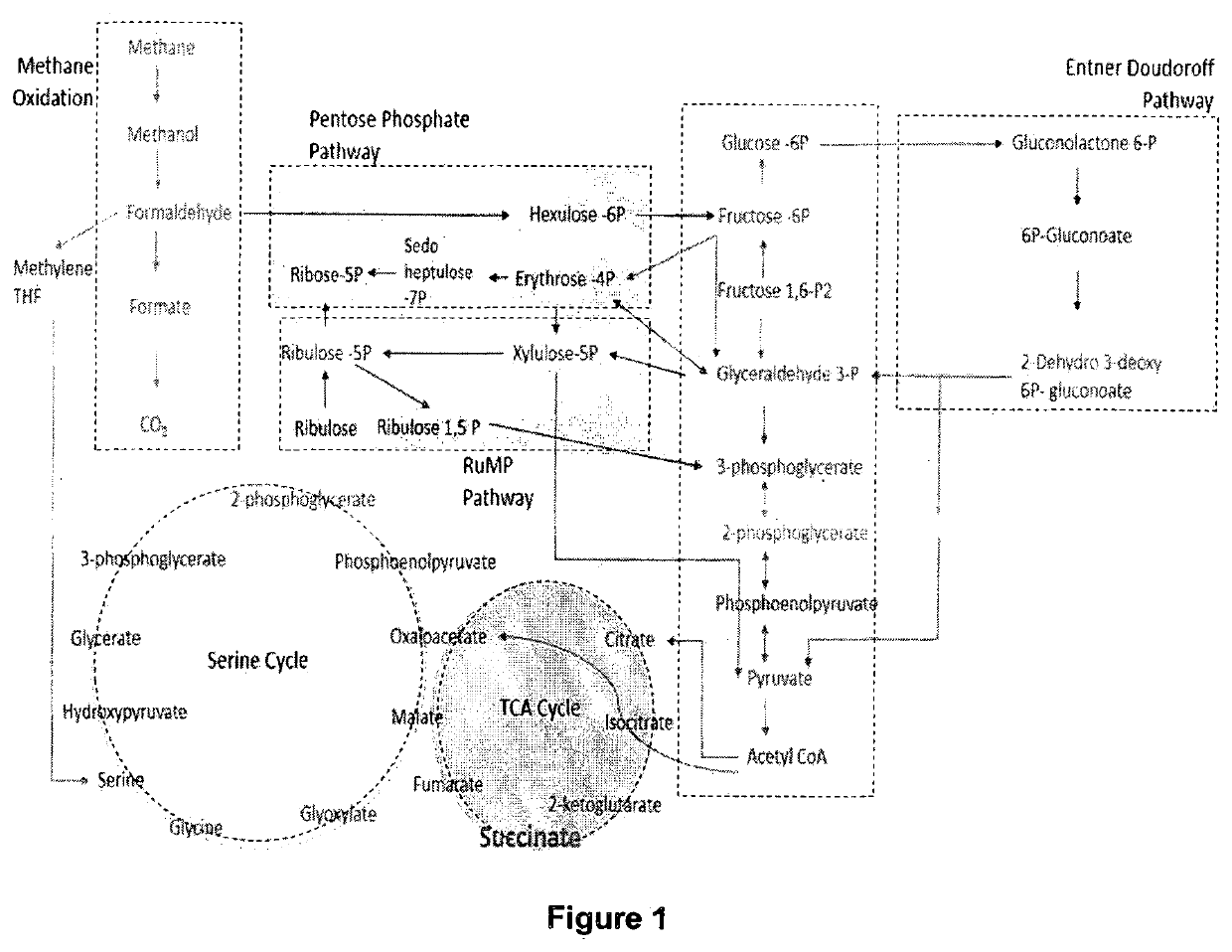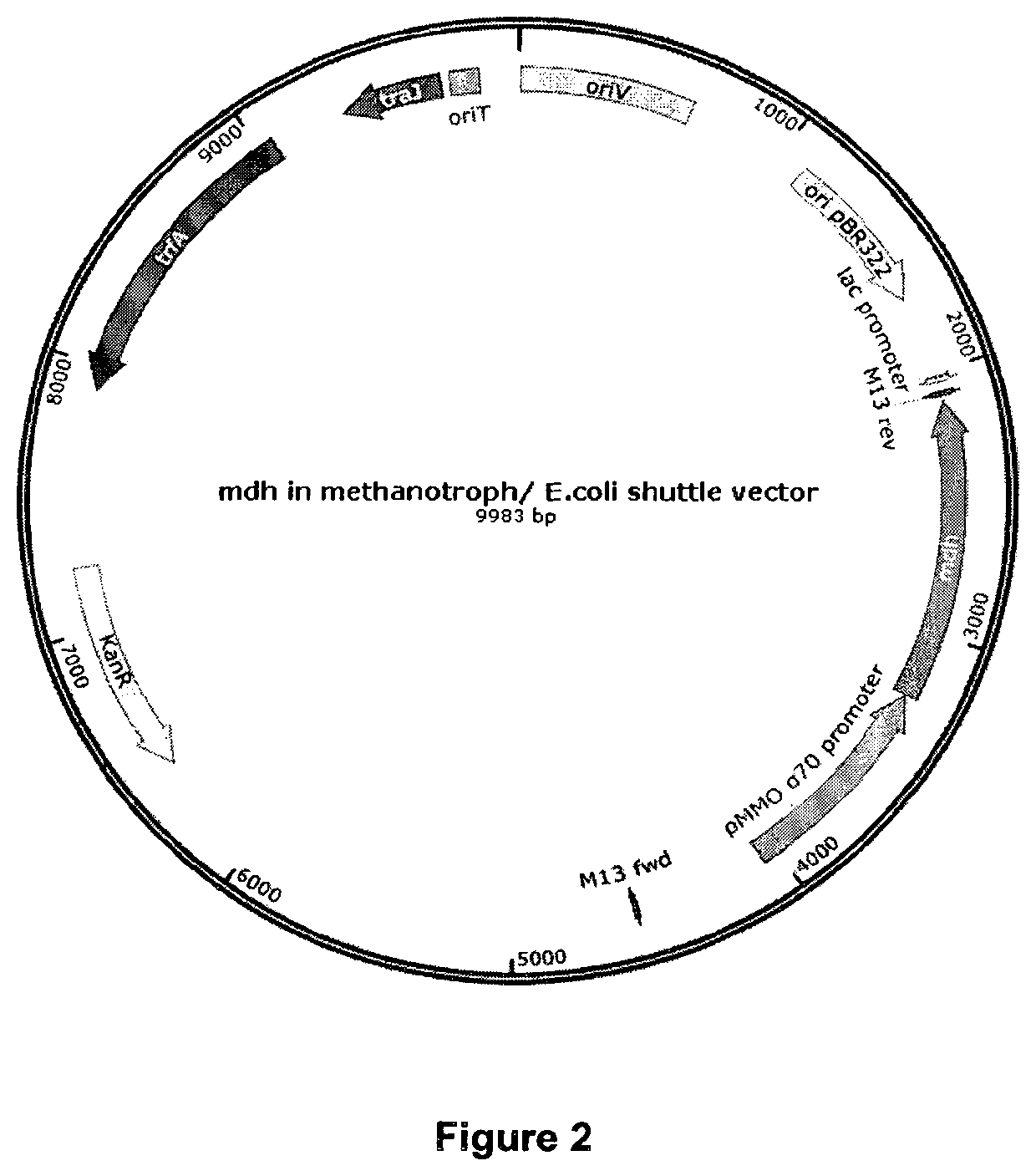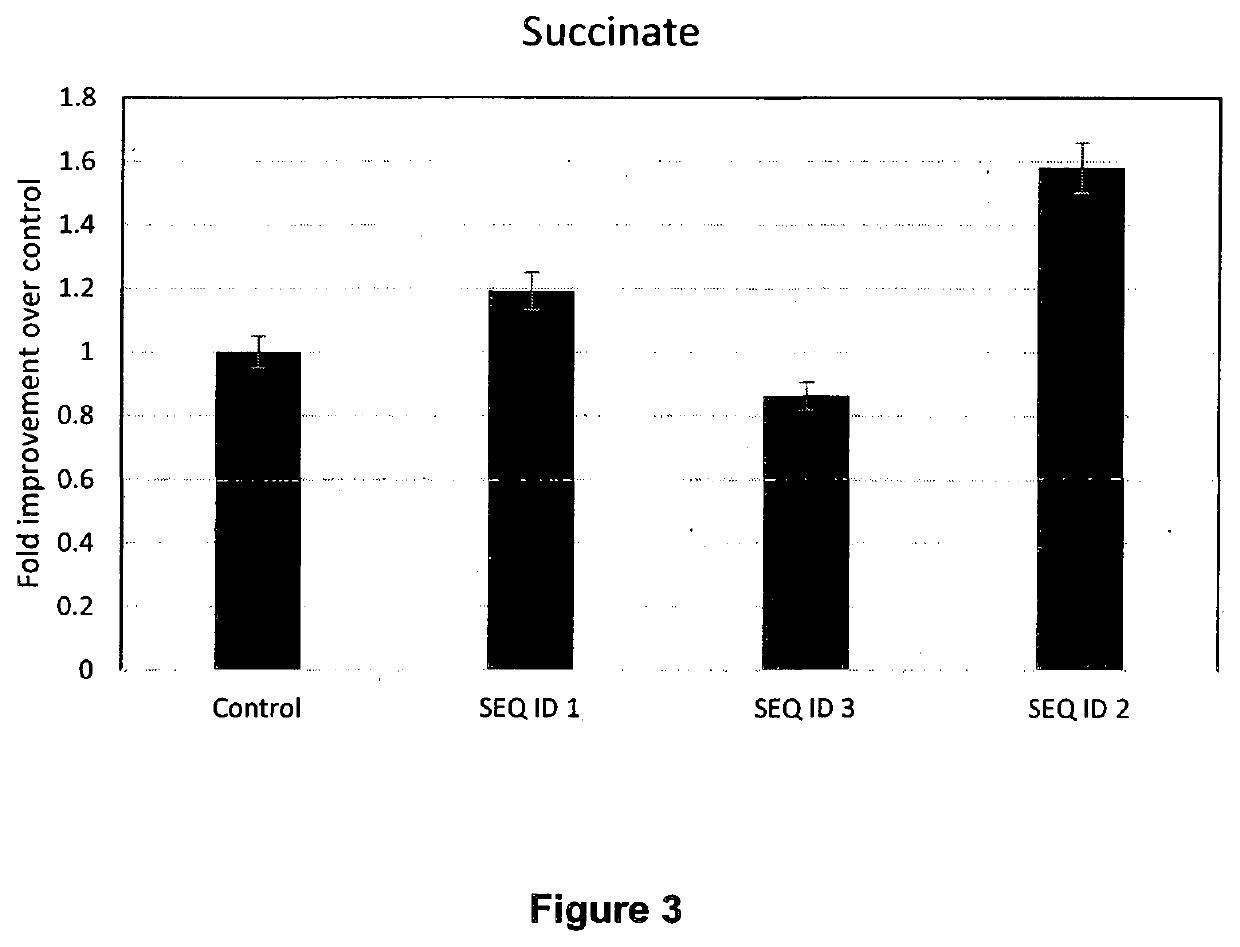Recombinant methanotrophic bacterium and a method of production of succinic acid from methane or biogas thereof
a technology of methane or biogas and recombinant methanotrophic bacteria, which is applied in the direction of biochemistry apparatus and processes, enzymes, lyases, etc., can solve the problems of adverse health effects, ineffective waste management, and serious risk of rapid deterioration in sanitation and general quality of urban life,
- Summary
- Abstract
- Description
- Claims
- Application Information
AI Technical Summary
Benefits of technology
Problems solved by technology
Method used
Image
Examples
example 1
uccinate Pathway Genes into a Shuttle Vector
Malate dehydrogenase (mdh E. coli; SEQ ID 1), pyruvate carboxylase (pyc P. aeruginosa (MTCC 424), SEQ ID 2), phospho enol pyruvate carboxylase (pepc E. coli, SEQ ID 3), genes were amplified individually from genomic DNA using primers flanked with SacI and SphI / PciI restriction enzymes. The amplified gene / operon was restriction digested and cloned into the same sites in the broad host range vector pMHA201 to create pSB107 (FIG. 2), pSB108, and pSB109. pMHA201 (Alit, H., & Murrell, J. C, Development and validation of promoter-probe vectors for the study of methane monooxygenase gene expression in Methylococcus capsulatus Bath, Microbiology, 155(3), pp 761-771. (2009)) is a plasmid with a broad range Origin of replication (OriV), Kanamycin resistance gene, Ampicillin resistance gene and OriT for conjugative transfer. Plasmid pSB107, pSB108 and pSB109 were sequence verified.
example 2
ation of Succinate Pathway Genes into Methanotrophs
Methanotrophs were cultivated in nitrate mineral salt (NMS) medium. NMS medium was prepared. NMS agar plates were prepared with 1.5% (w / v) Bacto agar. Antibiotics were added as required: kanamycin (30 μg / ml) and Gentamicin (5 μg / ml).
Methanotrophs were typically grown in 250 ml conical flasks with 24 / 29 joint containing 50 ml NMS medium. Flasks were sealed with suba-seals (Sigma Aldrich, Cat Num: Z279773-10EA) and gassed with 50 ml (i.e. ˜20%) methane / carbon dioxide (95 / 5, v / v mix). M. capsulatus Bath (from Prof. Colin Murrell, University of Norwich) derived strains were incubated at 45° C. with shaking at 200 rpm. M. trichosporium (from Prof. Colin Murrell, University of Norwich) derived strains were incubated at 30° C. A typical methanotrophic culture took about 4-6 days to reach stationary phase. Methanotrophs grown on NMS agar plates were incubated in gas-tight container under a methane / air / carbon dioxide atmosphere (50 / 45 / 5, by ...
example 3
d Assay of Methane to Succinate Activity
Positive transformants of M. capsulatus containing the malate dehydrogenase (mdh; SEQ ID 1; pSB107), pyruvate carboxylase (pyc; SEQ ID 2, pSB108), phospho enol pyruvate carboxylase (ppc; SEQ ID 3, pSB109) genes were verified by PCR. These were inoculated into 5 ml of liquid NMS media taken in 30 ml culture tubes and sealed with suba seals. 15 ml of Methane mixture (95% CH4; 5% CO2) was introduced into the culture tube using a syringe. The tubes were incubated at 45° C. at 250 rpm agitation. Once the culture OD reached 1, the cultures was centrifuged and the supernatant samples were taken and assayed for succinic acid. The organic acid concentrations were measured using Succinic Acid assay kit (Megazyme International; K-SUCC) according to manufacturer's protocol (FIG. 3).
Some of the recombinant strains had higher levels of succinic acid compared to the control strain. Recombinant strain with SEQ ID 1 was >15% improved when compared to the nativ...
PUM
| Property | Measurement | Unit |
|---|---|---|
| temperature | aaaaa | aaaaa |
| temperature | aaaaa | aaaaa |
| temperature | aaaaa | aaaaa |
Abstract
Description
Claims
Application Information
 Login to View More
Login to View More - R&D
- Intellectual Property
- Life Sciences
- Materials
- Tech Scout
- Unparalleled Data Quality
- Higher Quality Content
- 60% Fewer Hallucinations
Browse by: Latest US Patents, China's latest patents, Technical Efficacy Thesaurus, Application Domain, Technology Topic, Popular Technical Reports.
© 2025 PatSnap. All rights reserved.Legal|Privacy policy|Modern Slavery Act Transparency Statement|Sitemap|About US| Contact US: help@patsnap.com



